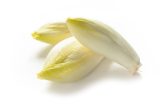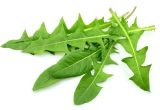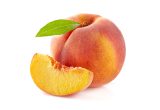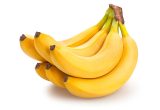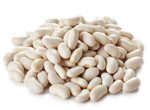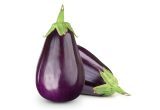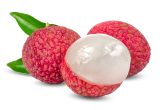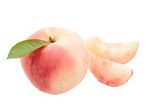Sorrel

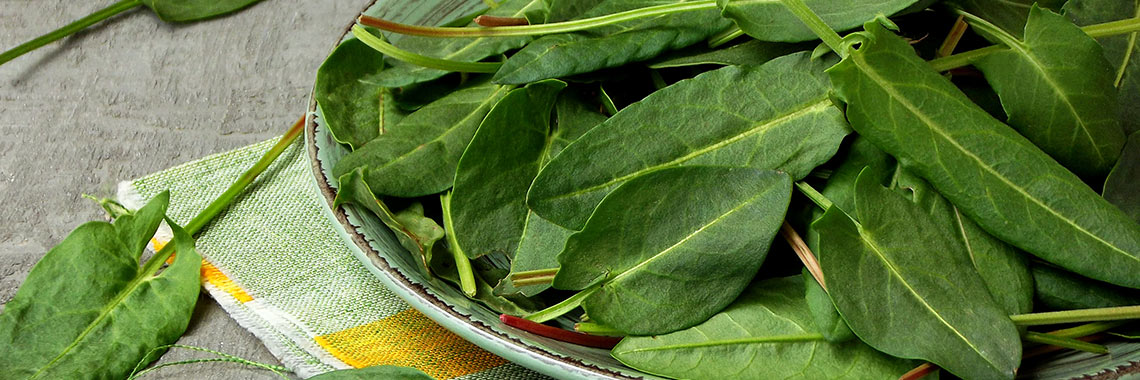
Description
- Sorrel (Rumex acetosa) belongs to the Polygonaceae family.
- It is a perennial herbaceous plant that is widely distributed throughout Southeast Asia (Bae, 2012; Ceccanti, 2020).
PHYSICAL AND ORGANOLEPTIC CHARACTERISTICS
- Sorrel is 25-55 cm high and forms thickets with dozens of propagules (Lima, 2019).
- The leaves of sorrel resemble those of spinach (Bae, 2012).
- Sorrel contains chlorophyll, a photosynthetic pigment (Porteka, 2016).
- Sorrel contains oxalic acid, which gives it its acidity and astringency (Bae, 2012; Bhat, 2017).
COMPOSITION CHARACTERISTICS (excluding macronutrients, vitamins and minerals)
- Among the polyphenols identified in sorrel are proanthocyanidins (tannins) such as procyanidins type A and B and propelagonidins (15 dimers, 7 trimers and 2 tetramers) and flavonoids, including flavan-3-ols, epicatechin and epicatechin-3-O-gallate (Bicker, 2009; Gescher, 2011).
- Thanks to its high content of flavonoids, tannins and anthraquinones, sorrel has anti-inflammatory, anti-cancer, anti-diarrhea and anti-scurvy properties (Lima, 2019).
- Sorrel is also said to have antibacterial, anti-viral and antifungal activities and therapeutic properties for hypertension and respiratory tract diseases. These antihypertensive effects are thought to originate from the ethanol fraction of sorrel and are notably mediated by nitric oxide production (Qamar, 2018).
RAW
The following values are approximate and depend on variety, season, ripeness, cultivation conditions, etc.
Raw sorrel is low in energy* as it provides an average of 23.20 calories (kcal) per 100 g, i.e. 96.90 kJ. A bunch of sorrel weighs on average between 150 and 200 g.
COMPOSITION TABLES
For each nutrient, the tables provide information on the content, the minimum and maximum values, as well as the percentage of the Dietary Reference Values (DRVs) for 100 g net of raw sorrel.
*Regulation (EC) No 1924/2006 of the European Parliament and of the Council of 20 December 2006 on nutrition and health claims made on foods.
MACRONUTRIENTS
| Constituent (g) | Average content |
Min-Max per 100g |
DRV% |
|---|---|---|---|
| Water | 93 | - | - |
| Fibers | 1,80 | 0,70 - 2,90 | - |
| Carbohydrates | 1,60 | 0,30 - 2,90 | 0,62 |
| Sugars | 1,54 | NC - 2,80 | 1,71 |
| Lipids | 0,65 | 0,60 - 0,70 | 0,93 |
| Saturated fat | 0,10 | - | 0,50 |
| Protein | 1,84 | 1,80 - 1,88 | 3,68 |
| Constituent (g) | Amount | Min-Max | DRV% |
|---|---|---|---|
| Water | Ciqual 2020 | - | - |
| Fibers | Ciqual 2020 | - | - |
| Carbohydrates | Ciqual 2020 | - | Règlement (UE) N°1169/2011 du parlement Européen et du conseil du 25 octobre 2011 |
| Sugars | Ciqual 2020 | - | Règlement (UE) N°1169/2011 du parlement Européen et du conseil du 25 octobre 2011 |
| Lipids | Ciqual 2020 | - | Règlement (UE) N°1169/2011 du parlement Européen et du conseil du 25 octobre 2011 |
| Saturated fat | Ciqual 2020 | - | Règlement (UE) N°1169/2011 du parlement Européen et du conseil du 25 octobre 2011 |
| Protein | Ciqual 2020 | - | Règlement (UE) N°1169/2011 du parlement Européen et du conseil du 25 octobre 2011 |
Zoom on carbohydrates
- The amount of carbohydrates present in sorrel (1.60 g per 100 g) is lower than the average quantity found in raw vegetables (4.45 g per 100 g)
- Sorrel is low in sugar* (1.54 g per 100 g) as it contains no more than 5 g per 100 g.
Zoom on fibres
- Raw sorrel contains less fibre (1.80 g per 100 g) than the average amount found in raw vegetables (2.43 g per 100 g).
Zoom on proteins
- Its protein content (1.84 g per 100 g) is almost equivalent to the average quantity found in raw vegetables (1.87 g per 100 g).
Zoom on lipids
- The amount of fat in raw sorrel (0.65 g per 100 g) is slightly higher than the average quantity found in raw vegetables (0.56 g per 100 g)
- Sorrel is low in fat* as it contains no more than 3 g per 100 g.
*Regulation (EC) No 1924/2006 of the European Parliament and of the Council of 20 December 2006 on nutrition and health claims made on foods.
MINERALS AND TRACE ELEMENTS
| Constituent | Average content |
Min-Max per 100g |
DRV% |
|---|---|---|---|
| Calcium (mg) | 44 | - | 5,50 |
| Chloride (mg) | - | - | - |
| Copper (mg) | 0,13 | - | 13 |
| Iron (mg) | 2,40 | - | 17,14 |
| Iodine (µg) | 0,40 | - | 0,27 |
| Magnesium (mg) | 103 | - | 27,47 |
| Manganese (mg) | 0,35 | - | 17,50 |
| Phosphorus (mg) | 63 | - | 9 |
| Potassium (mg) | 390 | - | 19,50 |
| Selenium (µg) | 0,90 | - | 1,64 |
| Sodium (mg) | 4 | - | - |
| Zinc (mg) | 0,20 | - | 2 |
| Constituent | Amount | Min-Max | DRV% |
|---|---|---|---|
| Calcium (mg) | Ciqual 2020 | - | Règlement (UE) N°1169/2011 du parlement Européen et du conseil du 25 octobre 2011 |
| Chloride (mg) | Ciqual 2020 | - | Règlement (UE) N°1169/2011 du parlement Européen et du conseil du 25 octobre 2011 |
| Copper (mg) | Ciqual 2020 | - | Règlement (UE) N°1169/2011 du parlement Européen et du conseil du 25 octobre 2011 |
| Iron (mg) | Ciqual 2020 | - | Règlement (UE) N°1169/2011 du parlement Européen et du conseil du 25 octobre 2011 |
| Iodine (µg) | Ciqual 2020 | - | Règlement (UE) N°1169/2011 du parlement Européen et du conseil du 25 octobre 2011 |
| Magnesium (mg) | Ciqual 2020 | - | Règlement (UE) N°1169/2011 du parlement Européen et du conseil du 25 octobre 2011 |
| Manganese (mg) | Ciqual 2020 | - | Règlement (UE) N°1169/2011 du parlement Européen et du conseil du 25 octobre 2011 |
| Phosphorus (mg) | Ciqual 2020 | - | Règlement (UE) N°1169/2011 du parlement Européen et du conseil du 25 octobre 2011 |
| Potassium (mg) | Ciqual 2020 | - | Règlement (UE) N°1169/2011 du parlement Européen et du conseil du 25 octobre 2011 |
| Selenium (µg) | Ciqual 2020 | - | Règlement (UE) N°1169/2011 du parlement Européen et du conseil du 25 octobre 2011 |
| Sodium (mg) | Ciqual 2020 | - | - |
| Zinc (mg) | Ciqual 2020 | - | Règlement (UE) N°1169/2011 du parlement Européen et du conseil du 25 octobre 2011 |
Zoom on minerals and trace elements
- Sorrel is a source of:
- magnesium as it provides 27.47% of DRVs, i.e. 103 mg per 100 g; moreover, according to the data in the Ciqual 2020 table, sorrel is the vegetable that contains the most magnesium;
- potassium as it provides 19.50% of DRVs, i.e. 390 mg per 100 g;
- manganese as it provides 17.50% of DRVs, i.e. 0.35 mg per 100 g;
- iron as it provides 17.14% of DRVs, i.e. 2.40 mg per 100 g.
- Its copper content is significant. It provides the equivalent of 13% of DRVs, i.e. 0.13 mg per 100 g.
- Sorrel also provides the equivalent of 9% of DRVs for phosphorus, i.e. 63 mg per 100 g.
- The other minerals and trace elements are present in quantities representing less than 6% of DRVs.
VITAMINS
| Constituent | Average content |
Min-Max per 100g |
DRV% |
|---|---|---|---|
| Provitamin A Beta-carotene (µg) | - | - | - |
| Vitamin A equivalent (µg) | - | - | - |
| Vitamin B1 (mg) | 0,04 | - | 3,64 |
| Vitamin B2 (mg) | 0,10 | - | 7,14 |
| Vitamin B3 (mg) | 0,50 | - | 3,13 |
| Vitamin B5 (mg) | 0,041 | - | 0,68 |
| Vitamin B6 (mg) | 0,12 | - | 8,57 |
| Vitamin B9 (µg) | 13 | - | 6,50 |
| Vitamin C (mg) | 48 | - | 60 |
| Vitamin E (mg) | - | - | - |
| Vitamin K1 (µg) | - | - | - |
| Constituent | Amount | Min-Max | DRV% |
|---|---|---|---|
| Provitamin A Beta-carotene (µg) | Ciqual 2020 | - | - |
| Vitamin A equivalent (µg) | Calcul à partir de la valeur Provitamine A Béta-carotène* | - | Règlement (UE) N°1169/2011 du parlement Européen et du conseil du 25 octobre 2011 |
| Vitamin B1 (mg) | Ciqual 2020 | - | Règlement (UE) N°1169/2011 du parlement Européen et du conseil du 25 octobre 2011 |
| Vitamin B2 (mg) | Ciqual 2020 | - | Règlement (UE) N°1169/2011 du parlement Européen et du conseil du 25 octobre 2011 |
| Vitamin B3 (mg) | Ciqual 2020 | - | Règlement (UE) N°1169/2011 du parlement Européen et du conseil du 25 octobre 2011 |
| Vitamin B5 (mg) | Ciqual 2020 | - | Règlement (UE) N°1169/2011 du parlement Européen et du conseil du 25 octobre 2011 |
| Vitamin B6 (mg) | Ciqual 2020 | - | Règlement (UE) N°1169/2011 du parlement Européen et du conseil du 25 octobre 2011 |
| Vitamin B9 (µg) | Ciqual 2020 | - | Règlement (UE) N°1169/2011 du parlement Européen et du conseil du 25 octobre 2011 |
| Vitamin C (mg) | Ciqual 2020 | - | Règlement (UE) N°1169/2011 du parlement Européen et du conseil du 25 octobre 2011 |
| Vitamin E (mg) | Ciqual 2020 | - | Règlement (UE) N°1169/2011 du parlement Européen et du conseil du 25 octobre 2011 |
| Vitamin K1 (µg) | Ciqual 2020 | - | Règlement (UE) N°1169/2011 du parlement Européen et du conseil du 25 octobre 2011 |
Zoom on vitamins
- Sorrel is high in vitamin C as it provides the equivalent of 6% of DRVs, i.e. 48 mg per 100 g.
- It also provides the equivalent of:
- 8.57% of DRVs for vitamin B6, i.e. 0.12 mg per 100 g;
- 7.14% of DRVs for vitamin B2, i.e. 0.10 mg per 100 g;
- 6.50% of DRVs for vitamin B9, i.e. 13 µg per 100 g.
- The quantity of other vitamins represents less than 4% of DRVs.
POLYPHENOLS
Nutrition and health claims
According to the definitions of nutrition claims as presented in Regulation (EC) No 1924/2006 on nutrition and health claims, and in view of the composition of raw sorrel, the following claims may be used:
NUTRITION CLAIMS OF RAW SORREL
- Low in energy (100 g of sorrel provide less than 40 kcal)
- Low in sugar (100 g of sorrel contain no more than 5 g of sugars)
- Low in fat (100 g of sorrel contain less than 3 g of fat)
- High in vitamin C (100 g of sorrel provides more than 30% of DRVs)
- Source of magnesium (100 g of sorrel provide more than 15% of DRVs)
- Source of potassium (100 g of sorrel provide more than 15% of DRVs)
- Source of manganese (100 g of sorrel provide more than 15% of DRVs)
- Source of iron (100 g of sorrel provide more than 15% of DRVs)
HEALTH CLAIMS (for a consumption of 100 g of raw sorrel)
Vitamin C
- Vitamin C contributes to:
- normal function of the immune system during and after intense physical exercise,
- normal collagen formation for the normal function of blood vessels,
- normal collagen formation for the normal function of bones,
- normal collagen formation for the normal function of cartilage,
- normal collagen formation for the normal function of gums,
- normal collagen formation for the normal function of skin,
- normal collagen formation for the normal function of teeth,
- normal energy-yielding metabolism,
- normal functioning of the nervous system,
- normal psychological function,
- normal function of the immune system,
- protection of cells from oxidative stress,
- reduction of tiredness and fatigue,
- regeneration of the reduced form of vitamin E.
- Vitamin C increases iron absorption.
Magnesium
- Magnesium contributes to:
- reduction of tiredness and fatigue,
- electrolyte balance,
- normal energy-yielding metabolism,
- normal functioning of the nervous system,
- normal muscle function,
- normal protein synthesis,
- normal psychological function,
- maintenance of normal bones,
- maintenance of normal teeth.
Potassium
- Potassium contributes to:
- normal functioning of the nervous system,
- normal muscle function,
- maintenance of normal blood pressure.
Manganese
- Manganese contributes to:
- normal energy-yielding metabolism,
- maintenance of normal bones,
- normal formation of connective tissues,
- protection of cells from oxidative stress.
Iron
- Iron contributes to:
- normal cognitive function,
- normal energy-yielding metabolism,
- normal formation of red blood cells and haemoglobin,
- normal oxygen transport in the body,
- normal function of the immune system,
- reduction of tiredness and fatigue,
- normal cognitive development of children.
- Iron plays a role in the process of cell division.
References
-
Agence nationale de sécurité sanitaire de l’alimentation, de l’environnement et du travail. Table de composition nutritionnelle des aliments Ciqual 2020. Consultée le 31/08/2020 depuis le site internet Ciqual https://ciqual.anses.fr/
- Agence nationale de sécurité sanitaire de l’alimentation, de l’environnement et du travail. Table de composition nutritionnelle des aliments Ciqual pour le calcul des apports nutritionnels CALNUT 2020. Consultée le 22/09/2020 depuis le site internet Ciqual https://ciqual.anses.fr/
- Bae JY, Lee YS, Han SY, Jeong EJ, Lee MK, Kong JY, Lee DH, Cho KJ, Lee HS, Ahn MJ. A Comparison between Water and Ethanol Extracts of Rumex acetosa for Protective Effects on Gastric Ulcers in Mice. Biomol Ther (Seoul). 2012;20(4):425-30.
- Bhat DM. First Report of Some Insect Pests Damaging Rumex acetosa L. in Kashmir Himalaya. Trends in Biosciences. 2017; 10(12): 2168-71.
- Bicker J, Petereit F, Hensel A. Proanthocyanidins and a phloroglucinol derivative from Rumex acetosa L. Fitoterapia. 2009;80(8):483-95.
- Ceccanti C, Landi M, Incrocci L, Pardossi A, Guidi L. Suitability of Hydroponically-Grown Rumex acetosa L. as Fresh-Cut Produce. Horticulturae 2020, 6(1), 4.
- Gescher K, Hensel A, Hafezi W, Derksen A, Kühn J. Oligomeric proanthocyanidins from Rumex acetosa L. inhibit the attachment of herpes simplex virus type-1. Antiviral Res. 2011;89(1):9-18.
- Lima M, Fontanetti A, Soares M, Gazaffi R, de França Guimarães N, de Souza Gallo A. Vegetative Development and Nutrient Absorption March of Sorrel (Rumex acetosa L.).Journal of Agricultural Science. 2019;11(4): 262–70.
- Porteka B, Mot A, Cimpoiu C, Hosu A, Bischin Pușcaș C, Damian G, et al. Selective Protective Effect of Antioxidant-rich Rumex acetosa Extracts. Revista de Chimie -Bucharest- Original Edition. 2016;67(5): 833–837.
- Qamar HM-U-D, Qayyum R, Salma U, Khan S, Khan T, Shah AJ. Vascular mechanisms underlying the hypotensive effect of Rumex acetosa. Pharmaceutical Biology. 2018;56(1): 225–34.
- Règlement (CE) N° 1924/2006 du Parlement européen et du Conseil du 20 décembre 2006 concernant les allégations nutritionnelles et de santé portant sur les denrées alimentaires.
- Règlement (UE) N°432/2012 de la Commission du 16 mai 2012 établissant une liste des allégations de santé autorisées portant sur les denrées alimentaires, autres que celles faisant référence à la réduction du risque de maladie ainsi qu’au développement et à la santé infantiles.
- Règlement (UE) n°1169/2011 du Parlement européen et du Conseil du 25 octobre 2011 concernant l’information des consommateurs sur les denrées alimentaires, modifiant les règlements (CE) n°1924/2006 et (CE) n°1925/2006 du Parlement européen et de Conseil et abrogeant la directive 87/250/CEE de la Commission, la directive 90/496/CEE du Conseil, la directive 1999/10/CE de la Commission, la directive 200/13/CE du Parlement européen et du Conseil, les directives 2002/67/CE et 2008/5/CE de la Commission et le règlement (CE) n°608/2004 de la Commission.




